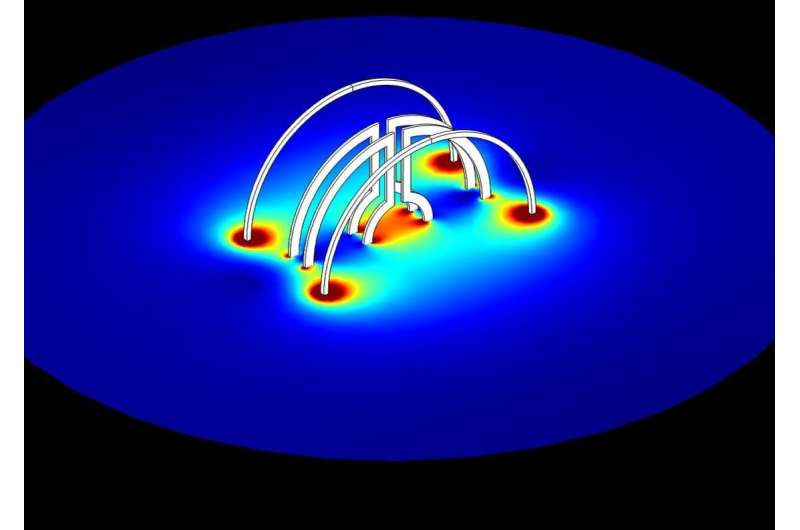Nuclear magnetic resonance: high sensitivity on smallest space

In many areas from materials sciences to medicine, nuclear magnetic resonance (NMR) is used for detailed molecule-specific investigations. Scientists of Karlsruhe Institute of Technology (KIT) have now succeeded in enhancing the sensitivity of NMR measurements. For this purpose, the scientists used so-called Lenz lenses that focus magnetic flux. The scientists present their method in the journal PLOS ONE.
Nuclear magnetic resonance (NMR) is used to study molecular properties of matter. Specimens are located in a high constant magnetic field and irradiated with a high-frequency alternating magnetic field. Both magnetic resonance tomography (MRT), a method in medical diagnostics to image the structure and function of tissues and organs, and NMR spectroscopy, a method to analyze the structure and dynamics of molecules, are based on nuclear magnetic resonance. However, researchers seek to improve the unfavorable signal-noise ratio and, thus, increase the sensitivity of NMR measurements.
"A high sensitivity is indispensable in particular when applying mass- and volume-limited methods or when a high spatial resolution is required," says Professor Jan Gerrit Korvink. He is director of the Institute of Microstructure Technology (IMT) of KIT.
In NMR measurements on small samples, miniaturized high-frequency coils proved effective for the generation and reception of the alternating magnetic field. For mobile applications and further miniaturization, an international team of researchers has now developed a new method to enhance sensitivity: They used magnetic lenses, so-called Lenz lenses, to focus magnetic flux of a macroscopic high-frequency coil on a smaller volume and to locally enhance sensitivity. With these lenses, named after physicist Emil Lenz, magnetic flux of the alternating field cannot only be focused, but also diverted or transformed. In this respect, the effect of these lenses can be compared with that of optical lenses on light beams. Change of the magnetic field induces current in the Lenz lenses, which are made of metal plates or wires in symmetric or asymmetric arrangement. The shape of the lenses guides the induced currents such that the magnetic field is focused.
With Lenz lenses, sensitivity of measurements in very small spaces, into which conventional NMR systems do not fit, can be increased significantly. Moreover, the lenses work at any field strength. Among others, medical applications can benefit from the use of Lenz lenses, Korvink says: "As the Lenz lenses are not wired, they are particularly suited for implants." Application might be feasible in brain implants to observe healing of the tissue over longer terms with high resolution or on plasters for the observation of skin cancer. Currently, scientists are exploring further applications, among others in electrical engineering.
The results are reported in the journal PLOS ONE.
More information: Nils Spengler et al. Magnetic Lenz lenses improve the limit-of-detection in nuclear magnetic resonance, PLOS ONE (2017). DOI: 10.1371/journal.pone.0182779
Journal information: PLoS ONE
Provided by Karlsruhe Institute of Technology



















